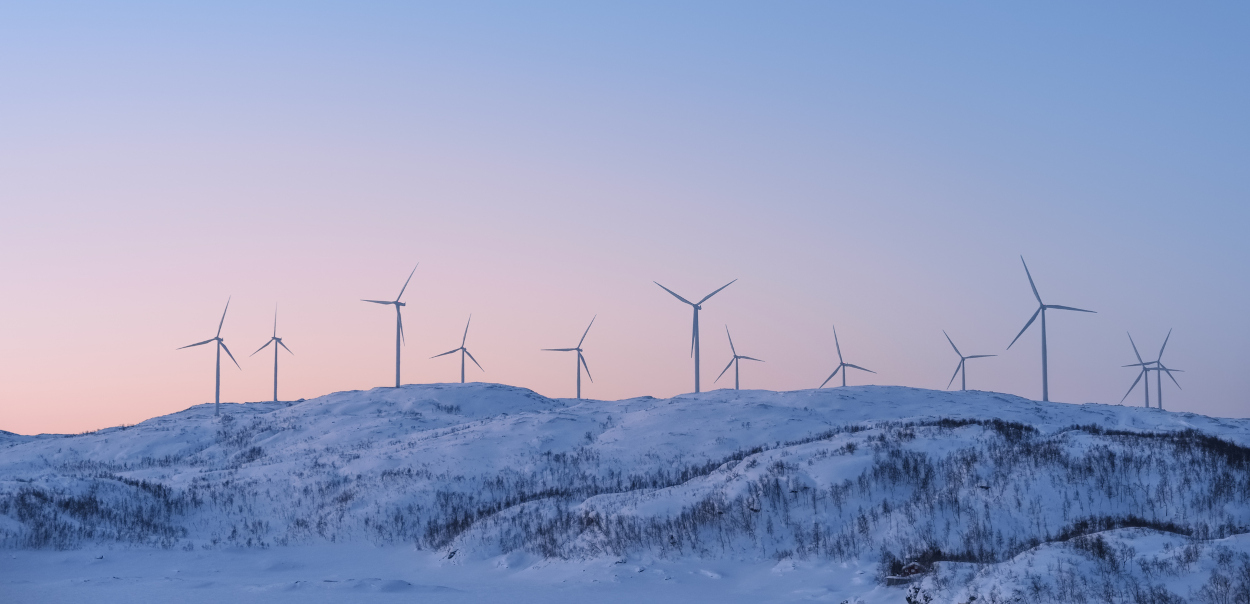The green and digital transition in Norway

GHG emissions targets require a fast energy transition
While Norway is well known for its large reserves and its production of crude oil and natural gas, it acknowledges the need to transform its energy sector in line with the energy transition and is fully committed to taking a role in the decarbonisation of the global economy.
It has committed to cutting its GHG emissions by at least 55% by 2030 compared to 1990 levels and achieve net-zero emissions by 2050. Even if these targets are not especially severe when compared to other North-European countries (Denmark is targeting a 70% reduction by 2030, the UK a 68% reduction, Germany 65%, Sweden 63% and Finland 60%), the transition will need to happen quickly because GHG emissions in 2022 were still higher than in 1990.
With the oil and gas extraction sector accounting for about one quarter of domestic GHG emissions, and in order to compensate for reduced oil and gas export revenues as a consequence of the projected decrease in global demand for hydrocarbons, the country is eager to build new green export industries. Moreover, Norway is increasingly being hit by climate change-related events and certain sectors need to adapt accordingly.
The need to diversify power sources towards non-hydro renewables
Power generation, which is one of the most important sources of GHG emissions at global level, is already largely serviced by renewable energy in Norway – about 90% of electricity is produced from hydropower. However, increasingly frequent extreme weather events such as drought or heavy rainfall hinder the correct functioning of hydropower installations and undercut energy provisioning. Moreover, even though the country produces much more electricity than it consumes and exports its surplus, electricity demand is expected to continue to grow in the coming years, in particular due to the fact that Norway will be the first country to ban the sale of new petrol and diesel cars in 2025. Therefore, the authorities are attempting to diversify energy sources. The fastest-growing source of new electricity generation in the country is non-hydro renewables, notably solar photovoltaic led by residential installations. Favourable regulations and the affordability of solar technology are both factors that support demand in this regard.
The offshore wind segment is a relative newcomer on the domestic electricity generation market, and Hywind Tampen, the first floating offshore wind farm in Norway, has only been fully operational since August 2023. Meanwhile, the authorities proceeded to hold the first bottom-fixed offshore wind auction in March for the Sorlige Nordsjo II project, with a firm commitment to develop 30 GW of offshore wind capacity by 2040. However, the investment environment remains challenging for the offshore wind sector, where concerns over profitability have pushed candidate companies to withdraw from tenders. The auction for the Utsira Nord project will also be postponed until at least 2025, due to a willingness to align with EU state aid regulations. The industry’s aim is to develop floating offshore wind technology, while expansion within the onshore wind power segment is expected to be constrained by local opposition and a new deterrent tax. However, the recent resolution of a dispute between Sami reindeer herders and the government regarding the construction of the largest onshore wind farm in Fosen represents a positive step forwards for the sector.
Clean hydrogen as a sustainable export industry to offset the loss from hydrocarbons
The development of clean hydrogen production contributes to the energy transition while compensating for the progressive loss of revenues from oil and gas exports.
Norway is developing both green (using renewable power) and blue (through CO2 carbon-capture and storage) hydrogen technologies. Two end-use sectors have been prioritised: maritime transport and energy-intensive industries. While green hydrogen is primarily suited to meet domestic demand, blue hydrogen should be more focused on exports.
Since Norway is a pioneer in the development of carbon-capture and storage (CCS) technologies, underpinned by large-scale publicly supported projects, this makes blue hydrogen using gas an attractive solution for the energy transition, building on the synergies with and the expertise of the gas sector. Agreements have already been made with Germany for the construction of a pipeline to export 2 GW of blue hydrogen by 2030 and to build a 3 GW gas-fired power plant in Germany using blue hydrogen from Norway, to help meet demand.
However, many uncertainties remain regarding the potential of clean hydrogen to effectively replace the lost export revenues from hydrocarbons, as demand for hydrogen is still difficult to ascertain at this stage. Hydrogen is not yet a broadly traded commodity and is often produced onsite by its users. Its consumption will therefore depend on its potential future uses, and the volume of hydrogen demand can substantially differ between applications.
Development of data centres: another opportunity for Norway
The abundance of renewable hydropower resources, low energy prices compared to other countries and its proximity to subsea fibre optic cables make Norway an attractive location for data centres, which will only continue to grow in demand due to the development of artificial intelligence and high-performance computing in Europe in the coming years. This expected rapid growth is supported by the authorities’ willingness to strengthen their data centre strategy and improve access for foreign actors. Even though Norway has recently promulgated a new regulation that bans data centres hosting crypto-mining operations and prompts them to report KPIs in order to manage the sector’s further demand for electricity as well as its environmental footprint, this regulation is not expected to hamper the sector’s growth.
Analyst: Florence Thiéry – f.thiery@credendo.com